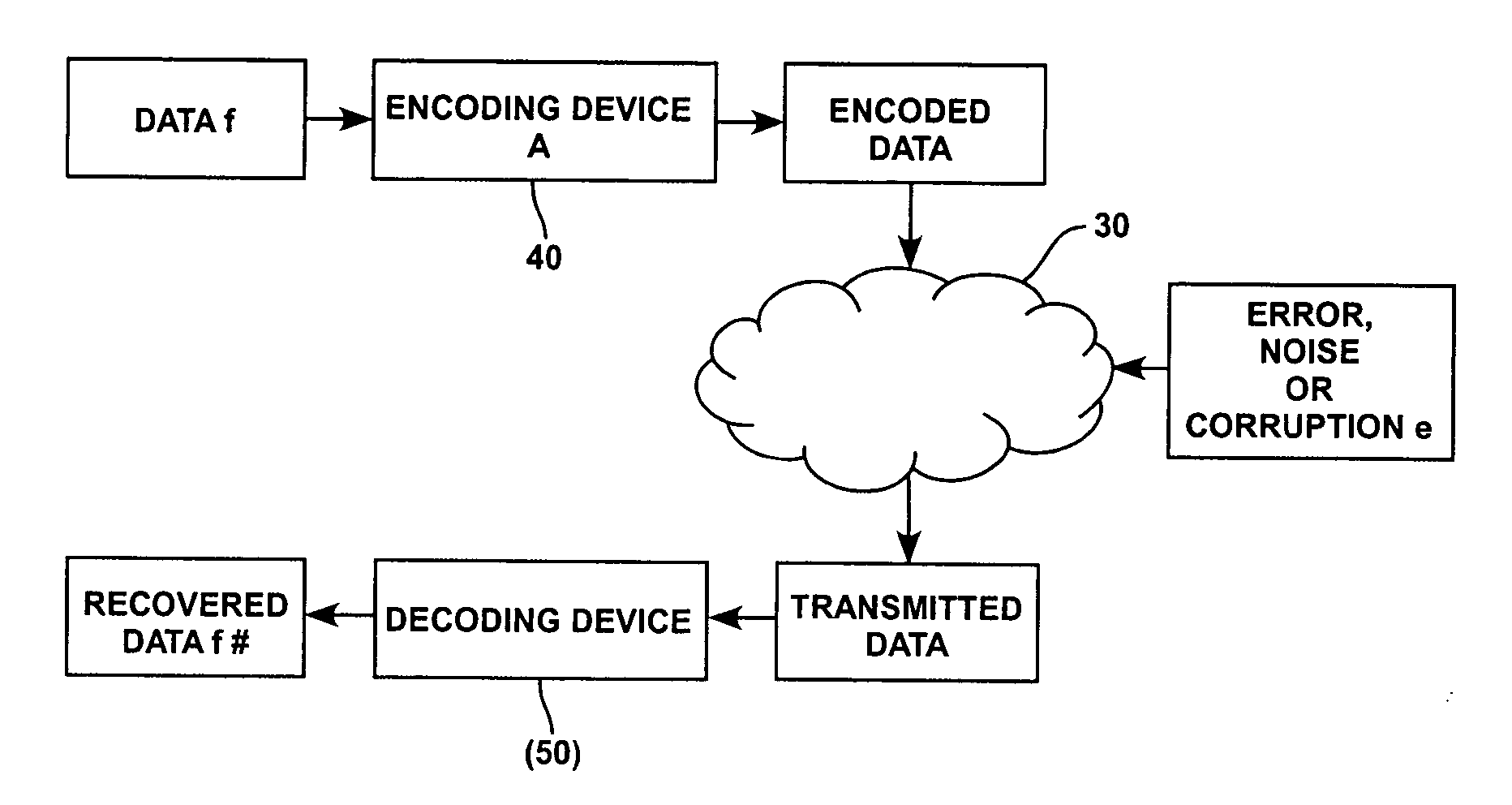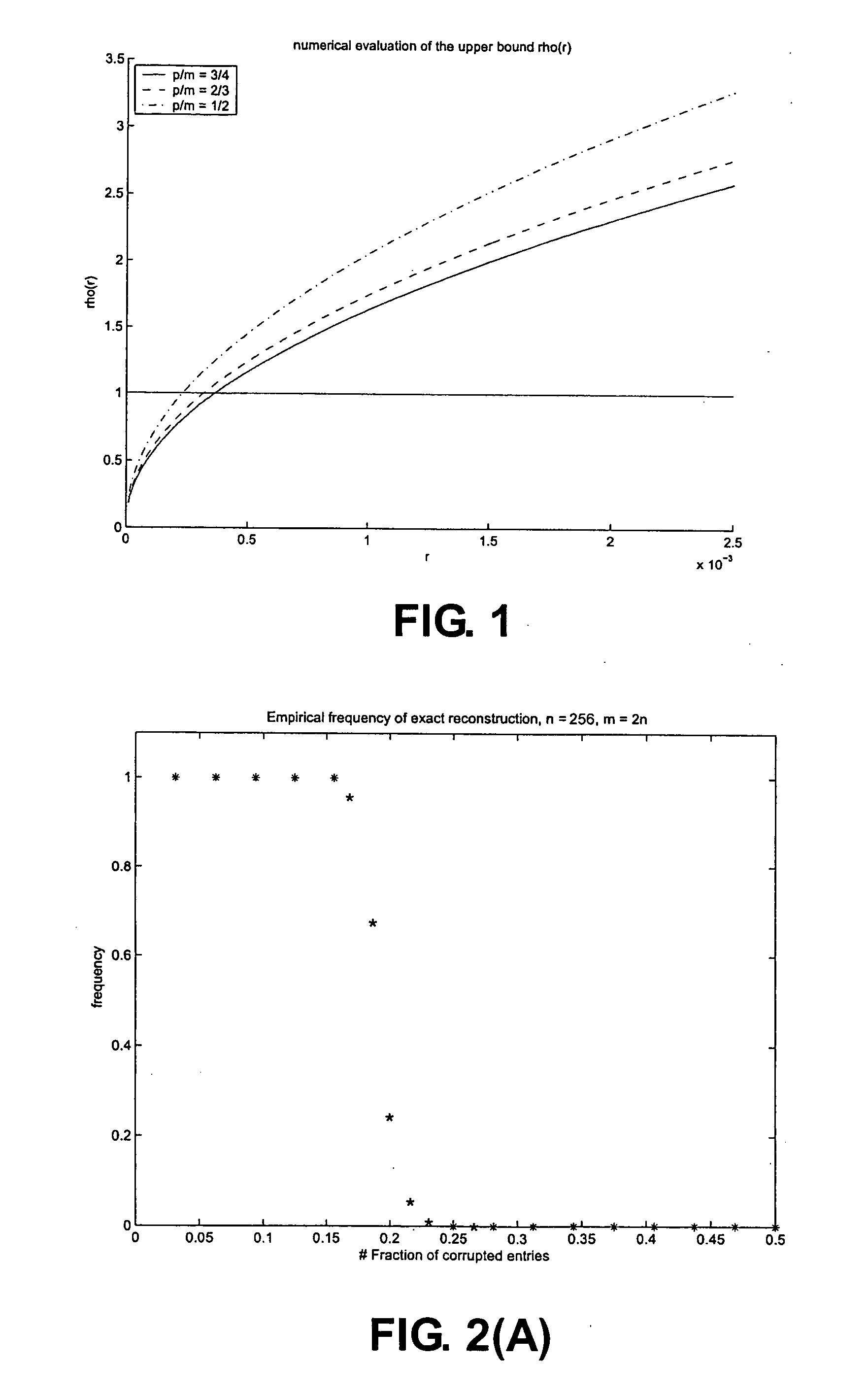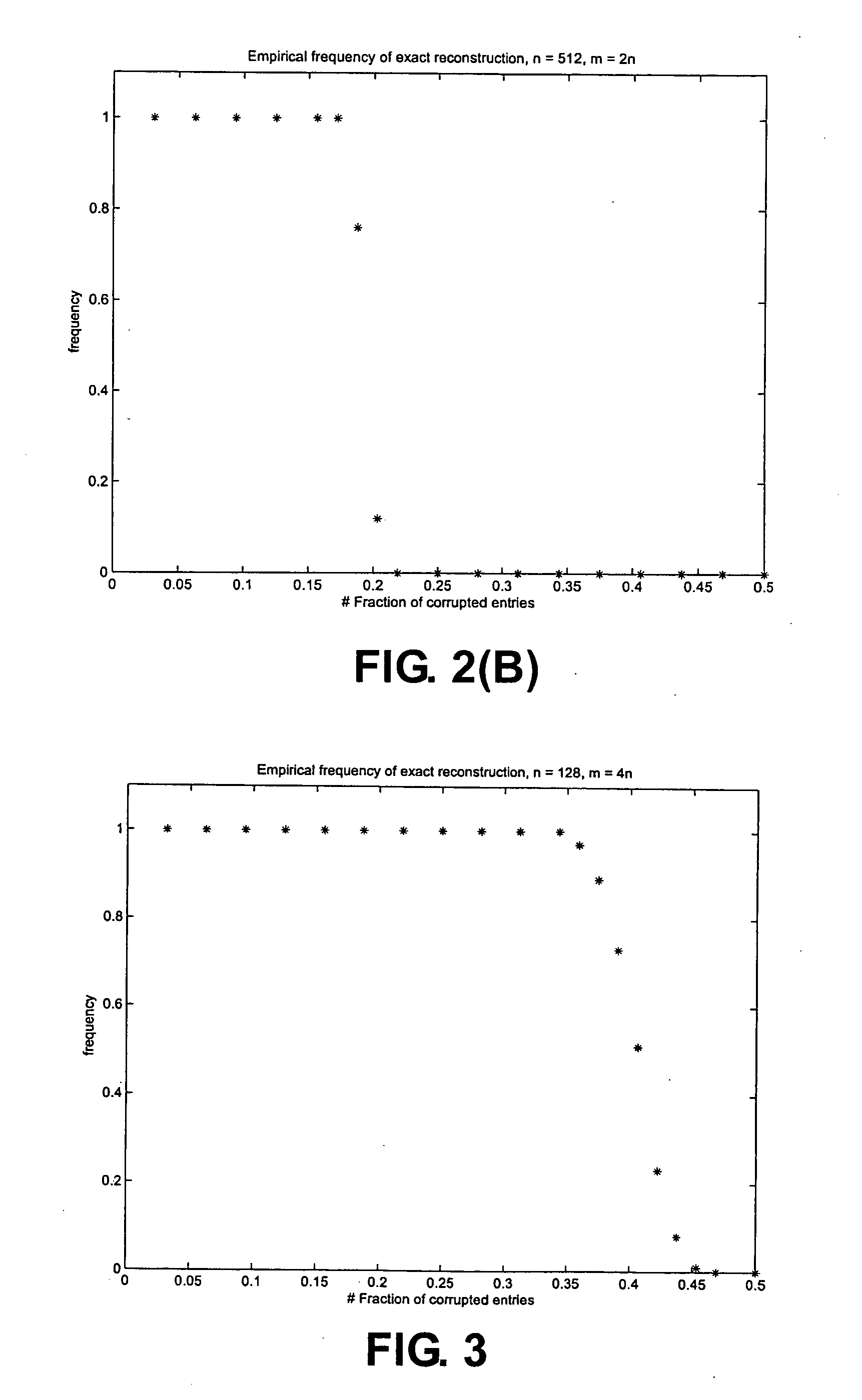Computer-implemented method for correcting transmission errors using linear programming
a linear programming and computer-implemented technology, applied in the field of correcting errors, can solve the problems of little practical use, inability to recover f, and clearly combinatorial in nature, and achieve the effects of increasing the robustness of data, reducing the cost of recovery, and similar performan
- Summary
- Abstract
- Description
- Claims
- Application Information
AI Technical Summary
Benefits of technology
Problems solved by technology
Method used
Image
Examples
Embodiment Construction
[0029] The present application introduces the concept of a restrictedly almost orthonormal system—a collection of vectors which behaves like an almost orthonormal system but only for sparse linear combinations. Thinking about these vectors as the columns of the matrix F, the applicants show that this condition allows for the exact reconstruction of sparse linear combination of these vectors, i.e. e. The applicants' results are significantly different than those mentioned above as they are deterministic and do not involve any kind of randomization, although they can of course be specialized to random matrices. For instance, it shall be shown that a Gaussian matrix with independent entries sampled from the standard normal distribution is restrictedly almost orthonormal with overwhelming probability, and that minimizing the l1-norm recovers sparse decompositions with a number of nonzero entries of size ρ0·m; the applicants shall actually give numerical values for ρ0.
[0030] The applica...
PUM
 Login to View More
Login to View More Abstract
Description
Claims
Application Information
 Login to View More
Login to View More - R&D
- Intellectual Property
- Life Sciences
- Materials
- Tech Scout
- Unparalleled Data Quality
- Higher Quality Content
- 60% Fewer Hallucinations
Browse by: Latest US Patents, China's latest patents, Technical Efficacy Thesaurus, Application Domain, Technology Topic, Popular Technical Reports.
© 2025 PatSnap. All rights reserved.Legal|Privacy policy|Modern Slavery Act Transparency Statement|Sitemap|About US| Contact US: help@patsnap.com



